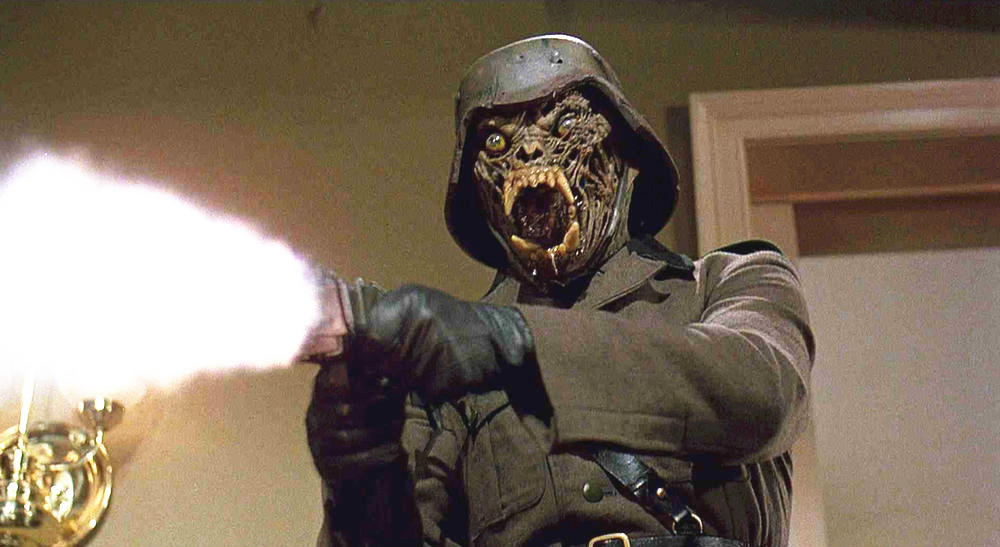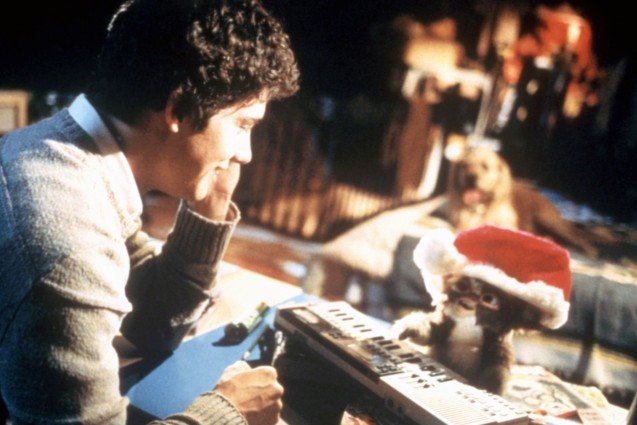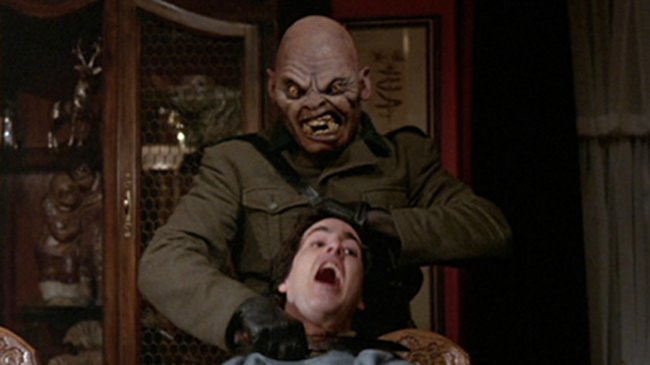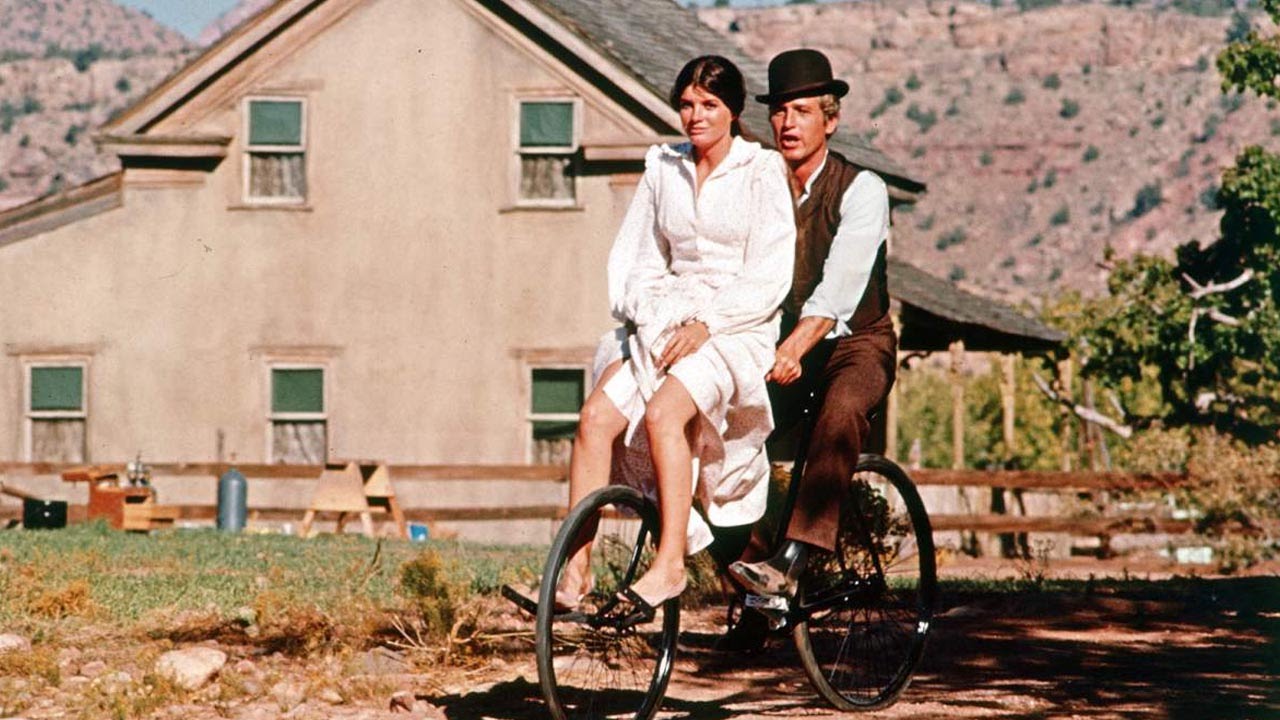
What makes someone say ‘WTF’? It’s a surprisingly broad category – a scene can be shocking and out of nowhere, contributing nothing and leaving only confusion in its wake. A scene can carry the plot forward or drive home a point, but still be executed in such a way that leaves one more alarmed about the telling than what was being told.
Maybe it’s a scene that sticks out more than any other and becomes a piece of that movie’s mystique, or so completely overwhelms the rest of the story that it’s all anyone remembers. With respect to the different ways a brain can be thrown for a loop, here are 10 movies (among many) with scenes that are – in one way or another – sure to inspire a pure moment of ‘WTF am I watching?’
1. Gremlins – Santa Claus

“If you expose it to the light, you may hurt it. If you get it wet, it will multiply. And never, ever feed it after midnight.” The three rules of Gremlins are cemented into the cultural Zeitgeist of 80’s kids, paired up with a deep fondness for Gizmo’s baleful brown eyes and (slightly creepy) little fingers.
Billy (Zach Galligan) is the lucky guy who ends up with Gizmo, a friendly little creature called a mogwai sold in antique stores to people entirely unprepared for the responsibility. Gizmo is cute, the other mogwai that show up (after Gizmo gets wet) are cute. They aren’t so cute once they break that final and most important rule, completing their metamorphosis into scalier, meaner, PG-13-rated Gremlins. They were a little bit murderous as mogwai, but as Gremlins they have the greater range of motion required to carry out those murders. Also, this is a Christmas movie.
There’s plenty of creature effects to pull off a story where the monsters outnumber the human cast by nearly double, and to happily deliver a lot of very weird and violent shenanigans. But amidst all of the chaos, Phoebe Cates as Kate Beringer puts up her dukes and delivers a low-key moment that stands out.
After exclaiming ‘Now I have another reason to hate Christmas’ to Billy apropos of nothing, Kate then launches into a deadpan, detailed story about the time her father went missing during Christmas holidays.
With her features eerily lit up by the Yule log and with Gizmo making sad puppy sounds, she explains how her father’s corpse eventually toppled out of the chimney, dressed in a Santa Claus costume, having suffocated to death while trying to stage a fun surprise for the kids. The soundtrack swells, Kate laughs, and she says that’s how she found out that there isn’t a Santa Claus. Throughout her entire spiel, Billy awkwardly picks through the debris of the living room, avoiding eye contact.
Gizmo looks sad. They instantly move on to the task at hand. WTF just happened?
Warner Bros had been reluctant to let the scene through at all, swayed in the end by Steven Spielberg saying he supported director Joe Dante’s desire to keep it in. Are audiences supposed to laugh? Are they supposed to feel bad? Did Phoebe Cates just tell your child that Santa is dead?
2. Toy Story 3 – The incinerator

The formula should be a familiar one by now: the toys are alive when nobody is looking, and they treasure the children who love them. They don’t seem to hold the same level of fondness for collectors.
Toy Story 3 came out in 2010, eleven years after Toy Story 2, and all characters in the franchise observed that passing time faithfully. Andy, the owner of all the toys, is grown up and ready for college. He’s prepared to leave childhood behind but makes sure to take the classic cowboy pal, Woody (voiced by Tom Hanks) with him. His last few favourite toys are packed up for storage, but accidentally end up being donated to a daycare centre.
The toys are a passionate and emotional lot, and they refuse to believe they were thrown away by accident. Once in the daycare centre they turn their back on Woody, who has come to try and bring them home, and instead fall under the sway of Lotso – Lots ‘O’ Huggin Bear (Ned Beatty). Lotso benignly watches out for the toys in the daycare centre and assures them that life there is just great, which is something people tell you when things are not great. Everything seems perfect, until it turns out the new toys are cannon fodder for abusive preschoolers, keeping Lotso and his lackeys in reserve for kids who know how to play nice.
Toy Story 3 brings us to the end of the franchise, and it’s a dark chapter. In the same series we have had moments like a baby doll’s head with mechanical spider legs creeping out from under the bed, but Toy Story 3 stands out as particularly grim. There’s also a baby doll in 3, but the less said about it the better.
Lotso is a bitter, angry, vengeful bear who doesn’t believe in love and can’t stand that anyone else would be so naive. He preys on the toys’ insecurities and tries to turn them against each other, and then to destroy them. When that fails, they all end up fighting each other to the death inside a huge incinerator. That seems like a natural progression of events, which brings us to the most WTF moment in the film.
The incinerator isn’t playing around, and the toys make absolutely no effort to hide the fact they think they are definitely, actually going to die. Our heroes are frantically scrambling for their lives before they surrender, and link their plastic hands together to await their fiery, melty deaths with some degree of dignity. At the last possible second they are rescued via alien squeeze toy deus ex machina and are thrown immediately back into the shenanigans.
What the hell was that? Neither Disney nor Pixar are any stranger to the bad end for bad guys device, and Lotso gets his in the end, but nothing that seems to really hold up to the intensity of group incinerator death. It isn’t a swashbuckling adventure through dangerous turf played off for excitement; the toys have no more tricks up their sleeves (well, the non-alien toys) and they accept death with their friends. That’s a trickier conversation to have with the kids than the one about why Mufasa isn’t getting up.
3. Cabin Fever – Pancakes

Going into the woods is never a good idea, especially not when in a group of marginally sexy young adults. Eli Roth’s 2002 black comedy Cabin Fever doesn’t make any attempt to challenge that notion, sharing every last moist, pulsating detail in its overview of exactly how horrible a weekend the characters have. There’s scenes of over-zealous personal grooming, dog mauling, and police misconduct with that special Eli Roth flair. Movies with over-the-top shock and gore may not seem like any one scene would be more WTF than the others, but then there is the pancakes kid.
Early on but after they’ve realized they’re in trouble, one member of the party, Bert (James DeBello) looks for help. His frantic search takes him to an isolated general store with a couple of weird locals. One of those locals is a kid with a haircut that can best be described as party monk, and who cares about only one thing: pancakes.
Once Bert convinces the shop owner to help him out, the kid begins to scream for pancakes. There have been no pancakes anywhere, and Bert shares the audience’s confusion. Whipped into a frenzy, Pancakes Kid comes karate-kicking his way in slow motion across the asphalt, screaming for pancakes the entire time. The reactions to this from Bert and the store owner are fairly understated, maybe a bit irritated – maybe this is going somewhere.
It ends with the child biting into Bert’s hand, apparently tasting that something is very wrong, and then getting Bert into trouble with the dad. Bert flees the scene, clutching his wounded hand, and doesn’t seem bothered enough by this encounter to bother telling anyone about it. In light of all the other crap hitting the fan, maybe we can let that one slide.
WTF just happened here? Don’t worry about it. It’ll never come up again. Pancakes Kid is the memory that persists for many about this movie, and it’s extremely easy to see why.
Pancakes!
4. American Werewolf in London – Nazi werewolf gang

The creature effects in American Werewolf in London were game changers – David Naughton plays David, whose excruciating transformation to his hairier self is a defining moment for the werewolf genre. The movie is heavy with atmosphere and gruesome imagery, starting with the horrific mauling of David’s best friend and carrying on faithfully with blood in plentiful supply.
As David makes his journey further and further through the stages of lycanthropy, he’s plagued by disturbing hallucinations and dream states, fuelled by his survivor’s guilt and by the monstrousness inside him. One early moment in particular tells the story of a brutal home invasion.
His young siblings stretched out in front of the television, David makes nice with his family during a wholesome evening in. His mother and father gently banter back and forth as there’s a knock at the door, and when dear old dad swings it open he’s greeted by a volley of machine gun fire. A screaming, howling gang of Nazi werewolves barge in, spraying bullets Scarface-style and forcing David at knifepoint to watch the slaughter.
The scene is feverish, feral and brutal. It ends as abruptly as it began, with the shrieks of the Nazi werewolves cutting off as David gets his throat slit. As he jolts awake in his hospital bed, he casually turns his head to tell the nurse he’s had a wee bit of a nightmare.
WTF for not just its Gestapo wolf mutants, but for the shocking and lighting-round quality of the scene and for what this hysterical moment means for David. Nazi werewolves are WTF on their own (though not unfamiliar – Werewolf Women of the SS and the very recent Werewolves of the Third Reich suggest a connection), but apparently they can also come leaping out of nowhere when you least expect it. Always check the peephole first, kids.
5. Butch Cassidy and the Sundance Kid – Raindrops

Critically praised and cemented as a pillar of Western cinema, Butch Cassidy and the Sundance Kid is considered by a few sources to be one of the best films of all time. With Robert Redford as the Kid and Paul Newman as Butch, the film is based loosely on the true and hazy events of the pair of charismatic outlaws. Robbing banks and trains puts them constantly on the run in a story filled with classic lines (“Rules? Rules? There are no rules!” followed by a swift kick in the cojones) and iconic scenes, Butch Cassidy and the Kid are followed from start to guns-a-blazing finish.
Eventually, Butch and the Kid begin to create vague ideas of taking off with Etta, Sundance’s lady love (Katharine Ross) and possibly going straight. During their scheming for a better life and evading the law, Butch brings home a little surprise: a bicycle. Etta coyly asks him what it is, and he nebulously tells her ‘the future’. They then proceed to gaily ride around on the bike together as ‘Raindrops Keep Falling on My Head’ plays, followed by Butch performing a one-man bicycle show set to urgent circus carnival music. For those who haven’t seen this movie yet, yes, that’s really what happens, and it happens for a while.
Unlike some WTF moments that defy explanation, there’s a thematic reason for this scene. It comes out of nowhere and it’s a jarring moment, almost as if from another movie, but it can arguably be justified. For people without the context (or people who can’t be bothered to wade deep into movie analysis, which is fair), the scene is almost like something out of a low key fever dream.
The intent of it is purely symbolic – the bicycle, the music – symbols of contemporary time, of the future, of time rolling on while Butch and Sundance are dead and gone relics. An elegy moment, to borrow a phrase. That’s reasonable enough as far as explanations go, but it doesn’t make the moment any less WTF.